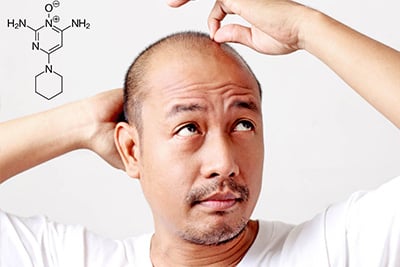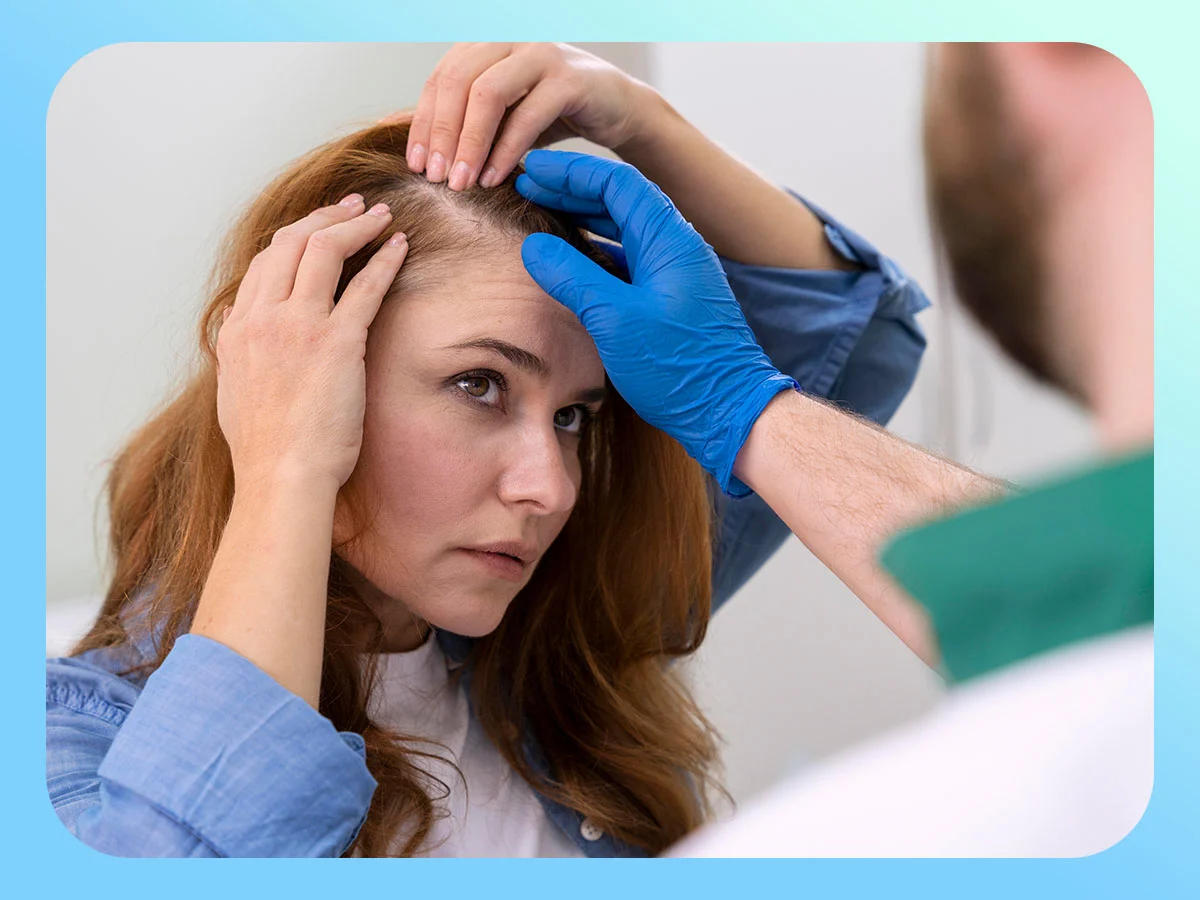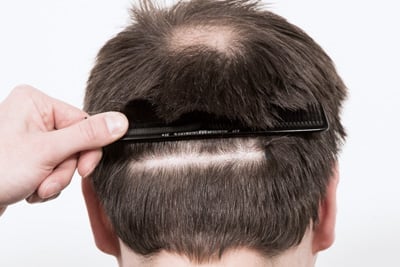Donor area in a FUE transplant: recovery and healing
The donor area in a FUE hair transplant is one of the many factors affecting the success of the operation, together with the hair structure or the form and grade of hair loss, for example. You must take into account that your donor area is shaved when using the FUE method; however, in a matter of a few days your hair will grow normally in your donor area after a FUE transplant.
While it is possible to obtain an average opinion with photos taken from various angles (front, right and left profile, top and back side…) before a pre-interview, please keep in mind that you need to have an individual consultation with your doctor to ensure a clear and accurate diagnosis.
If you are thinking of getting a transplant operation, check out hair transplant costs in Turkey. Also, at Clinicana you can get a totally free consultation with no obligation.
How many grafts can be extracted from the donor area?
People considering hair transplant surgery should not ignore the fact that the number of grafts to be transplanted completely depends on your donor area and your necessity.
Having higher density of hair on the donor area means that you have more hair available for a hair transplant, so the number of grafts to be transplanted increases in this way.
The donor area of each person has a limited capacity; therefore, it is possible to damage the donor area in case this capacity is exceeded. The number of grafts in a hair transplant operation is determined by the hair density of the donor area, but also by the size of the balding area.
What criteria might affect the number of follicles available for the hair transplant?
The following criteria might affect the number of grafts available on the donor area in some cases:
- Structure, size and texture of the scar in people who has previously undergone a hair transplantation with FUT method affects the donor area in some cases.
- Significant fat layers in nape area due to excess weight might affect the donor area.
- Skin diseases such as psoriasis.
- The number of harvested grafts might be relatively low in patients with curly hair due to non-straight hair follicles.
What is the following step after defining the donor area?
Doctor analyzes the facial anatomy (localization of frontal muscles, hair density, balding area and face shape) simultaneously, and then determines the most appropriate frontal hair line taking into account patient´s requests. Then, doctor determines the boundary points which will limit frontal hair line and graft distribution, and makes some markings over your head with a pen.
During the phase of hair planning, it is very important to consider patient´s age and his/her facial shape, but also his/her own requests. The most appropriate and aesthetic hairstyle is determined by your doctor depending on your desires and personal style.
What is the recovery time of the donor area after a FUE hair transplant?
There are no cuts or sutures when using the modern FUE technique; however, the donor area is shaved down to the skin to allow the extraction of the hair follicles through tiny holes made with minimally invasive tools.
These holes will heal in less than a week and then will appear just as little pink dots. After about two weeks, even these little dots will disappear, covered by the new hair growing among them.
So as you see, the healing time of the donor area after a FUE transplant is pretty fast. Doctor will recommend you to shampoo the donor area –and the recipient area, too- to keep it clean and in the best way, just to favour the healing of the donor area after a FUE surgery.
However, you must take into account that despite hair growing back naturally at the donor area after a FUE transplant, it will not grow from the dots where hair follicles have been extracted to be implanted in the recipient area of your head, because they are completely removed from beneath the scalp surface.

Minoxidil side effects top searches (9571 impressions) worry users trying minoxidil for hair loss before hair transplant cost. Does minoxidil work? Yes for 60% – but side effects of minoxidil include scalp irritation (70%), unwanted facial hair (women 5%), dizziness (3%). Minoxidil for women side effects vs men: shedding phase, heart palpitations rare but serious. Minoxidil 5% side effects stronger than 2%. Minoxidil long term […]

Losing your hair can feel like losing a part of your identity. It is a deeply personal experience, and for many patients, the thought of surgery can be overwhelming or simply unwanted. The good news is that the field of restorative medicine has advanced significantly. You no longer have to choose between doing nothing and […]

Hair Transplant Success and Survival Rates: What the Latest Studies Show When patients walk into our clinic for a consultation, their primary concern is rarely about the technical details of the surgery. Instead, they ask a fundamental question: “Will it actually work?” Investing in a hair transplant is a significant decision—financially, physically, and emotionally. It […]
















